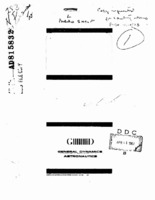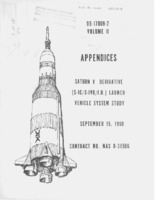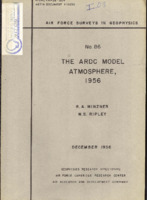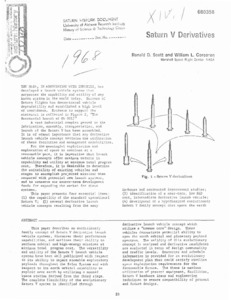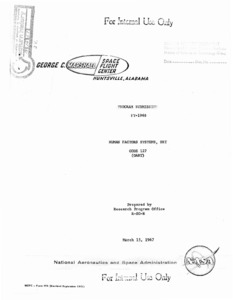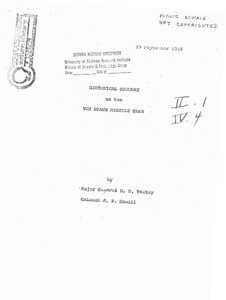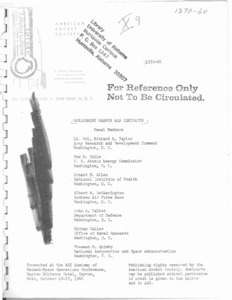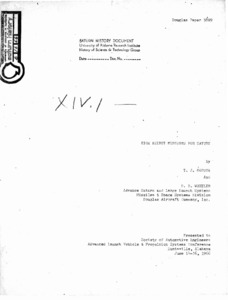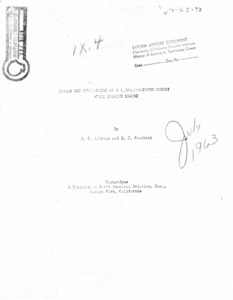
Browse Items (9 total)
Sort by:
-
"Bibliography of Research and Development Reports on the Centaur Program for Period 1958-1962."
Contract AF 18(600)-1775AD 815-832. Original is 6 sheets of microforms. Pages i, ii, iv, vi-xii, 110 and 344 missing on microforms. The title page notes that the document "Supersedes AE62-0400 and Supplements -A, -B, & -C." -
Volume II Appendices for the Saturn V Derivative Launch Vehicle System Study.
According to the table of contents, this volume of appendices contain various charts, graphs, and diagrams related to the S-IC stage data, instrument unit data, and vehicle data. -
"Air Force Surveys in Geophysics: The ARDC Model Atmosphere, 1956."
This paper presents a "realistic model of atmospheric properties based on reliable observations and current theories" according to the abstract found on page xv. This 1956 ARDC model was meant to be used as the "basis for engineering and design work performed." -
"Saturn V derivatives."
This paper desciibes an evolutionary family concept of !h turn V derivative launch vehicle systems, discusses their performance capabilities, and outlines their ability to perform orbital and hlgh-energy missions at minimum total program cost. -
"Human factor systems."
Reports and resumes detailing funds, guidelines and assets. -
"Historical Summary: S & ID Apollo Program."
Four and a half years have passed since President Kennedy and the United States Congress established a national goal of landing a man on the moon, before the end of the decade. This brief history is designed to be a working tool for use during the second half of this great adventure. It is expected that by presenting the events of the past in perspective this document will become a handy reference to accomplishments of the first half of the program. It is hoped that this volume will be of value to those directly and indirectly concerned with North American's portion of the Apollo program. This history contains a chronology of significant events, as well as material on the management of the program, a record of some of the breakthroughs in technology, a report of the hardware produced to date, and the many tests performed to man-rate the equipment. -
"Government Grants & Contracts."
The Army medical contract, grant, and research interest in the bio-science area. -
"High Energy Missions for Saturn."
Presented to Society of Automotive Engineers, Advanced Launch Vehicle & Propulsion Systems. When the Apollo lunar landing project is complete, the Saturn and Apollo hardware will only have begun to realize their ultimate potential for space exploration. The immense reserve of Apollo technology, facilities, and booster capability can then be directed to the achievement of national goals which lie far beyond the initial lunar landing. In achieving the Apollo lunar objectives, large investments will have been made in launch facilities, tracking systems, propulsion techniques, reentry systems, lunar landing systems and rendezvous technologies. Although developnent in these specialized areas has been tailored to the needs of Apollo, numerous studies by NASA and industry have demonstrated the feasibility of using the spacecraft, launch vehicles, and operating techniques for missions far more complex than lunar landings. Amortization of this hardware will prove cost-effective for missions of more sophisticated applications. -
"Design and Development of a 1,500,000-Pound-Thrust Space Booster Engine."
Describes the F-1 engine design and components.
